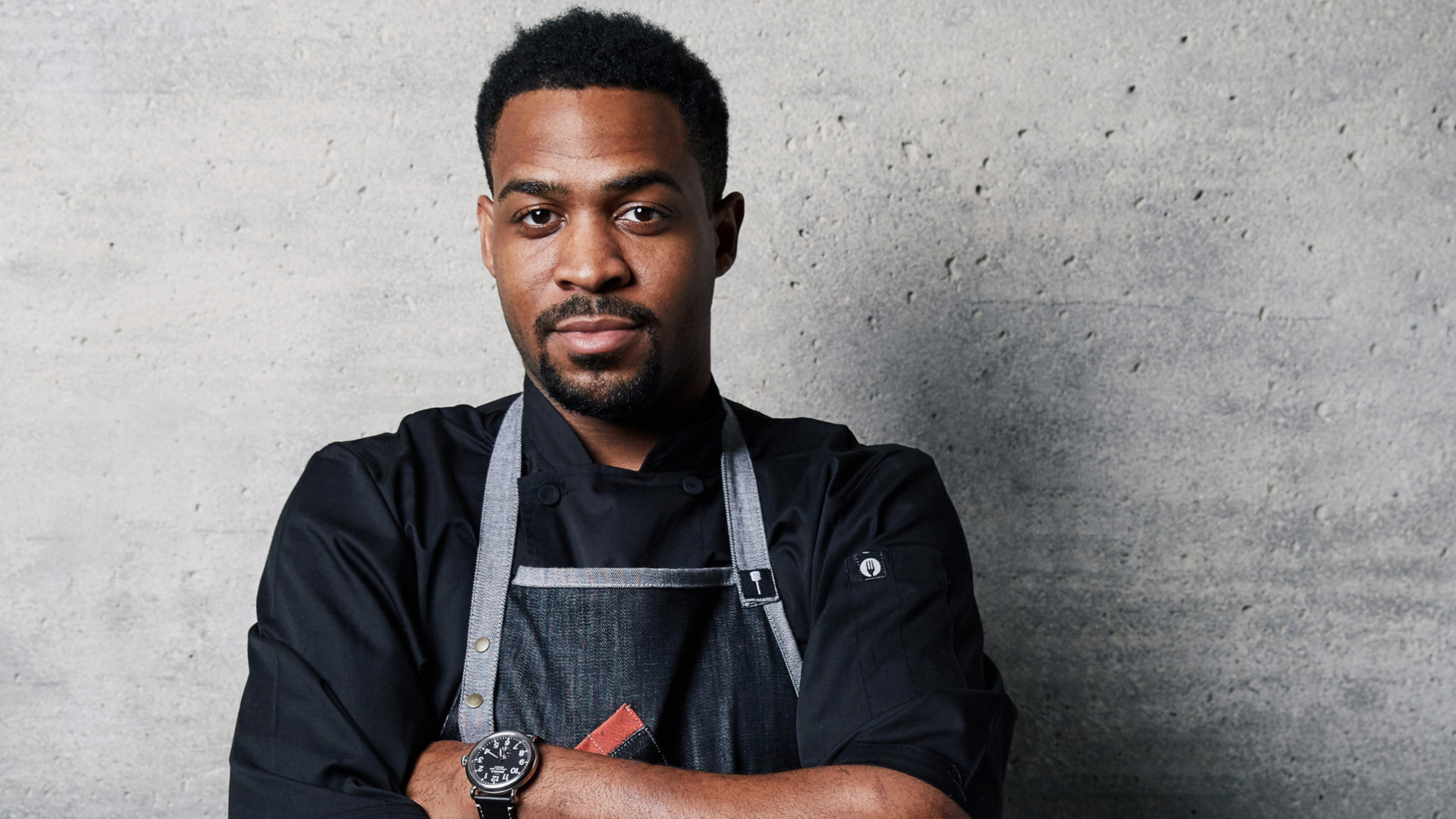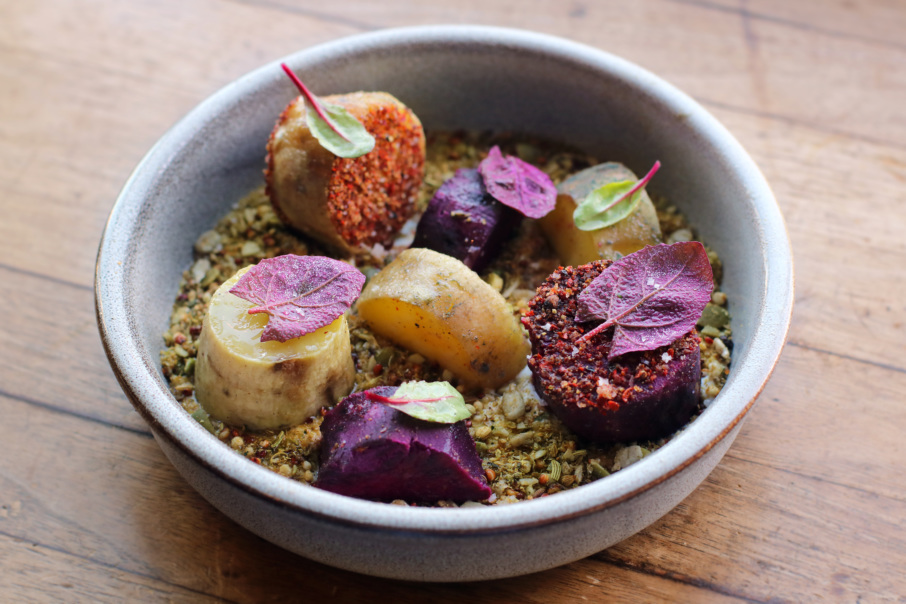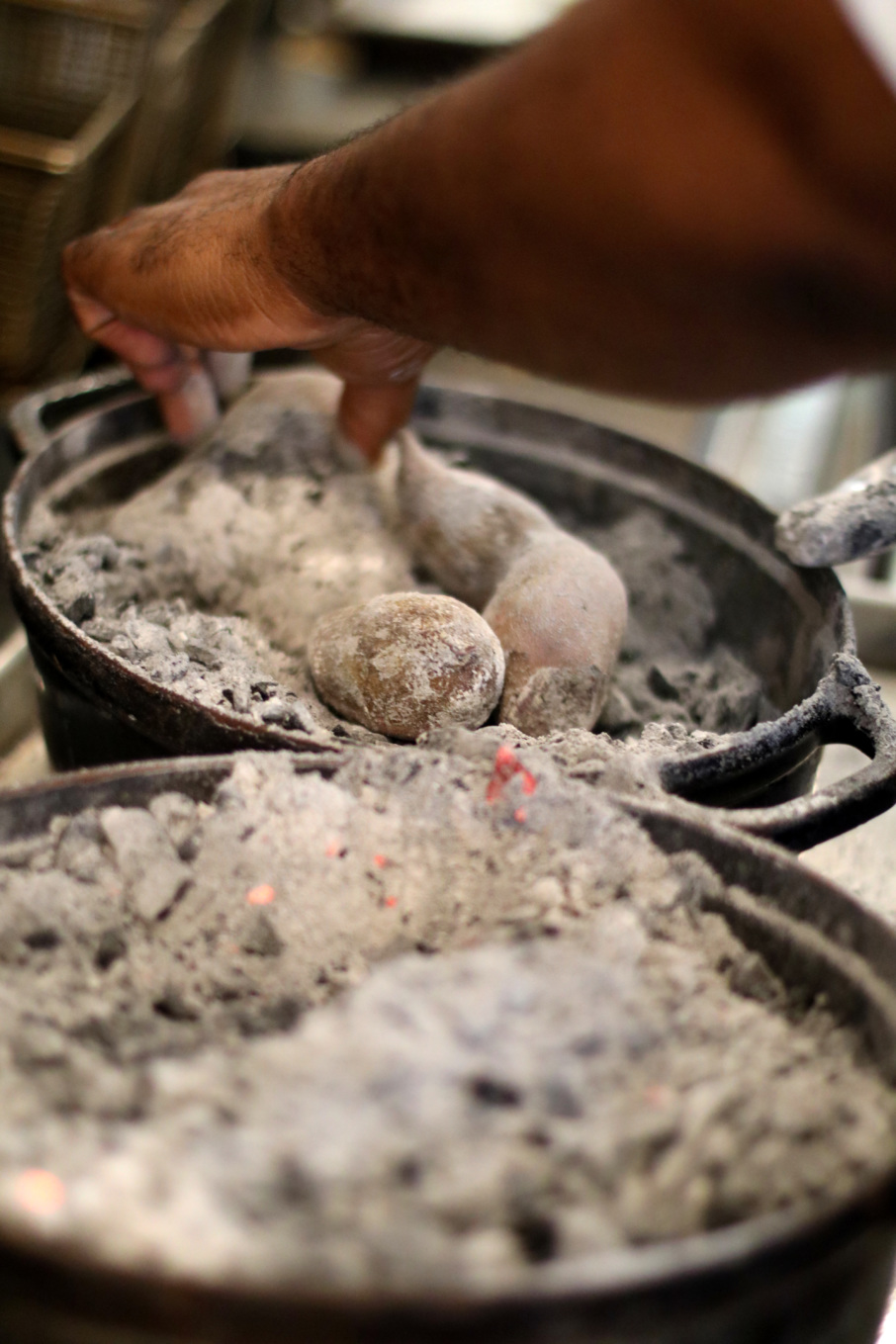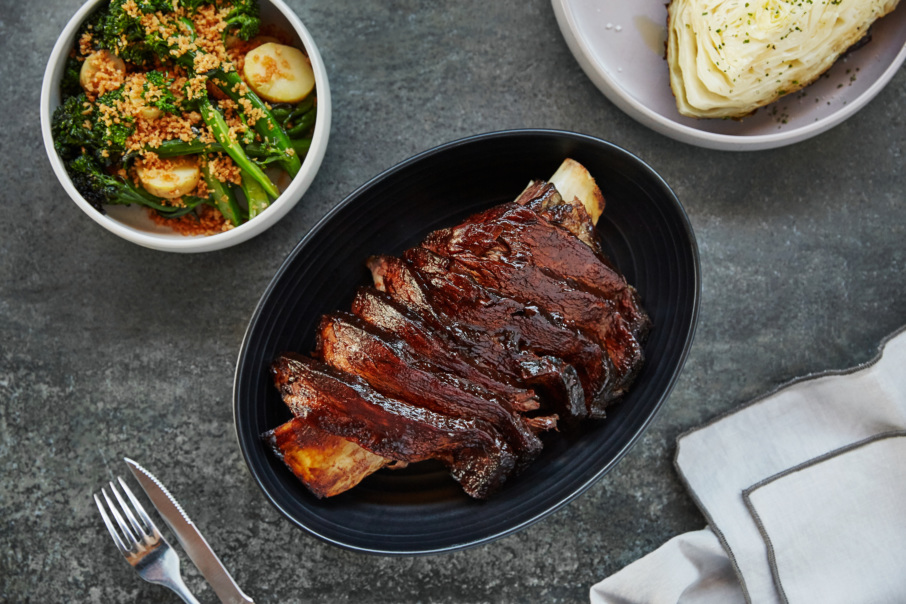
At Charcoal in Venice, dishes literally rise up out of the ashes
There’s something magical that happens when you throw a whole yam in a pile of hot ash. The skin acts as its own cooking vessel, never splintering or breaking, and the direct heat renders the flesh soft and silky but not mushy. Eventually the natural sugars and juices turn into a potent elixir that’s almost a syrup. Joe Johnson, chef de cuisine at Charcoal, found his muse for Off Menu Week.
“As a kid I had candied baked yams or just a whole yam, baked and cut open with butter and salt,” says the chef. “So I wanted to take that but use the techniques we use here to elevate it to something special.”
Johnson often digs into his personal history for dishes at Charcoal. Growing up in Virginia, he had a passion for cooking at a young age, learning basics from his Southern grandmother. This led him to working in a hotel kitchen near his hometown of Petersburg, starting off in the dish pit and working his way up to executive chef by the time he was 19. When he was ready to stretch his culinary wings, Johnson headed west to attend culinary school in Pasadena, and soon landed an externship at Savory in Malibu under the tutelage of James Beard Award-winning chef Paul Shoemaker.
Shoemaker introduced the abundance of Southern California’s fresh seasonal produce to the young chef, along with high-quality vinegars, salts, and spices he had never seen before. It was a whole new world, one he explored with gusto. Johnson made such an impression that when Savory closed, Shoemaker suggested he go to Mélisse, Josiah Citrin’s Michelin-starred fine dining restaurant in Santa Monica. Once hired, he soaked up everything like a sponge, learning the basics of a fine dining kitchen, like how to master his own station, be innovative, and seek perfection in every dish.

“These kitchens taught me L.A. food culture on a good note,” he recalls. “Working with such fresh ingredients, I learned that something like a tomato is the centerpiece and everything else is just extra. I had to figure out what to highlight about that tomato, to taste and read it and see what it’s telling me. How different cooking techniques can transform it and improve the textures, what acid or oil can do. I learned all the avenues to turn one tomato into many dishes that look and taste different.”
When Citrin decided to open Charcoal, Johnson was a natural choice to lead the team. He constantly stretches beyond the guidelines to come up with new ways of how and what to cook, looking beyond the basic techniques of wood-fired roasting, grilling, and smoking. This is how we got to the yam.
Wanting to use the ash left over from cooking with coals and fire — and there is an abundance of it — he started tinkering with cooking whole root vegetables in the still-hot byproduct. After all, Citrin’s whole cabbage is already legendary, charred black from slow-cooking in coals, leaving a soft and supple interior that’s almost sweet. They cook whole carrots and Yukon gold potatoes in fiery embers. Throwing a whole yam into a pile of burning ash was a no-brainer, an experiment with surprising results. Finding complementary flavors to finish the dish was another journey.
“We don’t use charcoal just because it sounds cool,” says Johnson. “We’re always looking for different ways to add smoke and flavor to great ingredients, but to make sure the menu isn’t too one note. When you’re working with coal, it’s limiting. You have to get creative to make sure there isn’t an overpowering smoky barbecue flavor on everything.”

Once the tuber comes off the heat, it’s split open and doused in a tangy feta sauce and house-made strawberry-guava vinegar. That hit of saltiness from the cheese and fruity acid plays up the yam’s natural sugars, rendering the whole thing utterly delicious. The entire dish is a great complement to the rich and smoky slow-grilled dry-aged short rib special that Johnson also created for Off Menu Week.
But he goes beyond technique and flavor; with these and most of his dishes, he’s exploring the full eating experience.
“Short ribs are usually braised, and slow grilling is like braising to a degree, but there’s more texture as a result,” says Johnson. “The thinly sliced meat is almost like pastrami but with a little chew. Each bite has more flavor than the last. I serve it with butter lettuce, flatbread and condiments, and you have to eat it with your hands. I think food tastes so much better when you eat with your hands.”

As he continues to grow as a chef and a leader, Johnson is ready to explore who he is as a person and bring that to the table. That means diving deeper into his family history and background to discover techniques that bridge the gap between African American soul food and African cuisine.
“If you trace food back 1,000 years or more, it’s all technique based,” he adds. “So if you can apply those techniques to ingredients we have today, it opens up a whole new world. I have a lot of countries to learn about and food to explore. It’s an undertaking. There are a lot of great chefs who’ve done this, brought it all to the forefront so people can recognize our African American food story. Now it’s my duty as a chef to use my experience and skill set to give back to the culture and our people, to follow and build on what other chefs have done.”
Johnson’s yam and short ribs, along with chef Jordan Olivo’s take on his grandmother’s chicken mole, and pasta carbonara with smoked egg yolk and crispy pork skin, will all be available during Resy’s Off Menu Week at Charcoal from Feb. 24 through Mar. 1.















